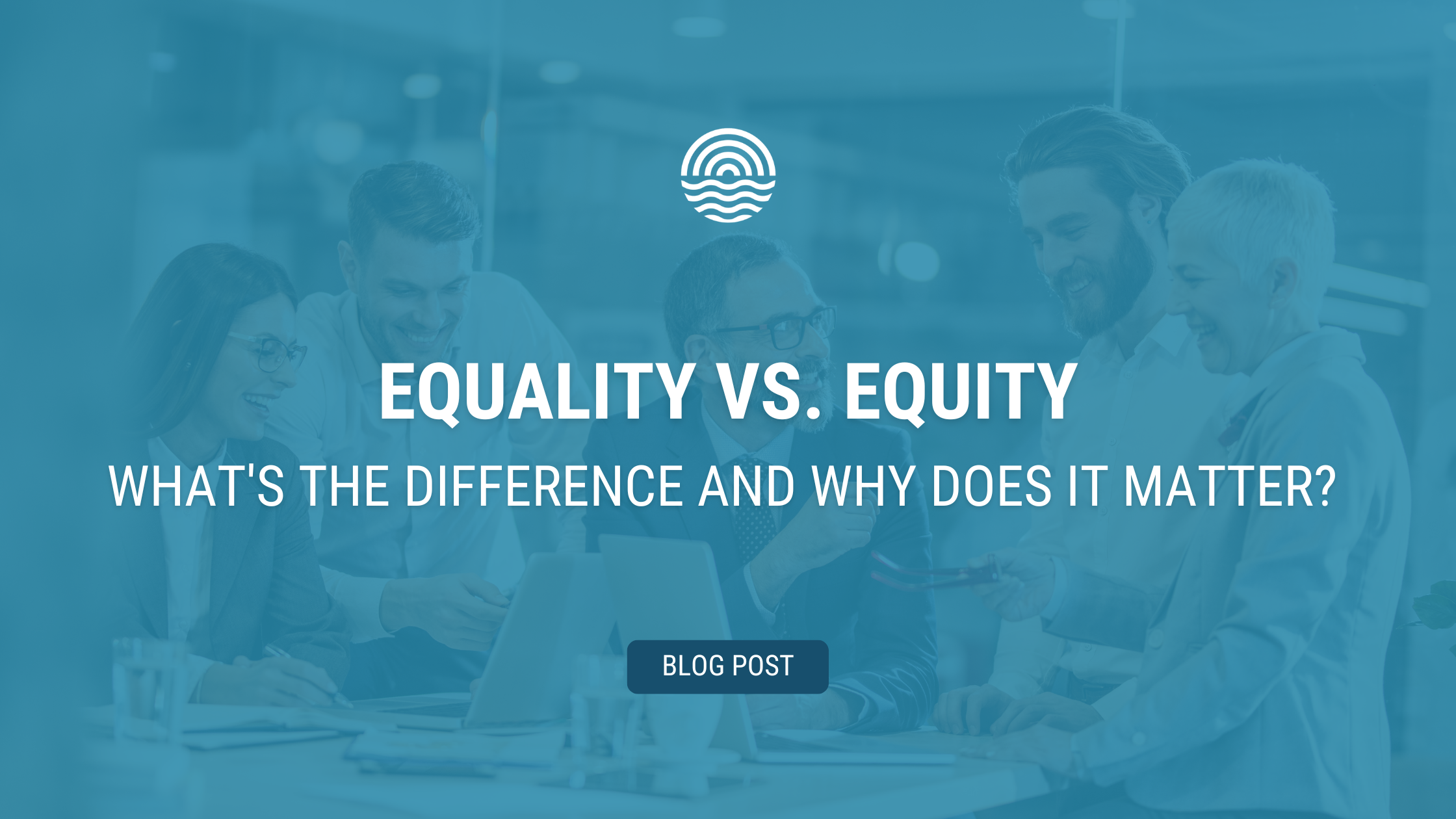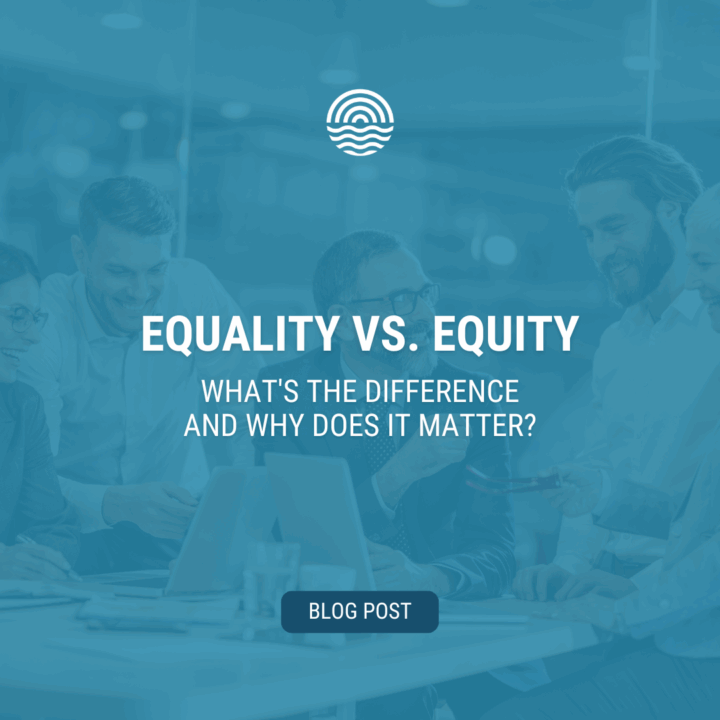
BLOG POST
Equality vs. Equity: What’s the Difference and Why Does it Matter?
At a glance, equality and equity might seem interchangeable. They both sound fair. Both come from a place of wanting to “do right.” But in the workplace, understanding the difference between the two can be the reason someone thrives… or quietly disengages.
Let’s break it down.
EQUALITY IS ABOUT SAMENESS
When it comes to equality, everyone gets the same tools, the same benefits, the same treatment — no exceptions.
On paper, that sounds fair. But it assumes everyone starts from the same place, with the same access, the same challenges, and the same needs.
And we know that’s simply not the reality.
EQUITY IS ABOUT GENUINE FAIRNESS
Equity recognizes that individuals have different lived experiences and barriers, and offers support tailored to meet them where they are.
It’s the difference between handing everyone the same ladder… and adjusting the height based on where they’re starting from.
WHAT DOES THIS LOOK LIKE IN PRACTICE?
Let’s say your company offers a professional development stipend.
Equality says: “Everyone gets $1,000 per year.”
Seems fair, right? But it assumes everyone can access the same opportunities.
What if one employee can’t attend off-site conferences because they’re a caregiver and can’t travel? Or another has a disability and the training you offer isn’t accessible?
Equity says: “Let’s ask what each person needs to grow and make sure our supports actually work for them.” That could mean offering virtual learning, flexible timing, or funding for alternative formats that better fit individual needs.
WHY THIS MATTERS
Workplace equity involves removing invisible barriers that standard policies often miss.
It’s what helps level the playing field, not just for the sake of fairness, but to unlock real performance, retention, and wellbeing across your team.
When equity is prioritized:
- Employees feel seen, valued, and supported
- Engagement increases, especially among underrepresented groups
- Retention improves because people know their unique needs won’t be overlooked
HOW TO START EMBEDDING EQUITY INTO YOUR WORKPLACE
Creating a more equitable workplace doesn’t happen overnight… but it does happen through consistent, intentional actions.
Here are a few ways to start shifting from one-size-fits-all policies to practices that truly meet your people where they’re at.
- Audit your programs and policies. Who is currently benefiting? Who might be left out?
- Create feedback loops. Don’t assume what people need: ask, listen, and adapt.
- Train your leaders. Equip managers to recognize inequity and respond with empathy and flexibility.
- Don’t wait for someone to speak up. If support only kicks in after someone asks, it’s already a barrier. Make equity proactive.
FINAL THOUGHTS
If we want our teams to thrive, we need to move beyond one-size-fits-all solutions.
A standard policy might look fair on paper, but it doesn’t account for the different ways people experience work. What works well for one person might be a barrier for another. A rigid return-to-office mandate may feel straightforward, but for someone with a disability, caregiving responsibilities, or a long commute, it might mean choosing between their job and their wellbeing.
Designing workplaces where people are truly set up to succeed means asking:
- Who might this policy unintentionally exclude?
- Whose needs are being centred, and whose are being overlooked?
- What flexibility can we build in without compromising consistency?
When equity becomes part of the design — rather than an afterthought — we can build workplaces that are more inclusive, more resilient, and better equipped to support all employees.
Want help building more inclusive workplace practices?
The Waterfront DEI Council provides tools and hands-on support to help our members and their teams embed accessibility and inclusivity into their policies, practices, and workplace culture — creating spaces where everyone feels empowered to thrive on the waterfront.


